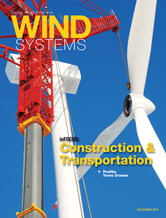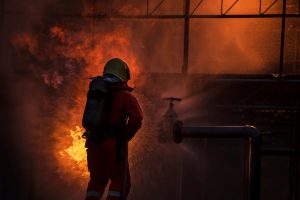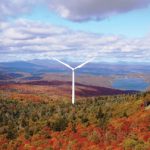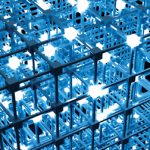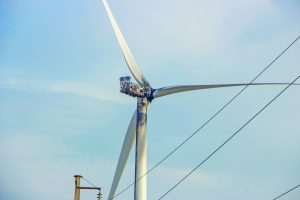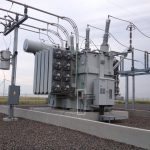Deepwater Wind recently completed construction on its first offshore wind farm in the United States off the coast of Rhode Island. By the end of 2016, an expected 17,000 residents living on Block Island will be the first in the nation to receive power from offshore wind.
Once power from Block Island Wind Farm is commercially available, island ratepayers will see their electric bills decrease by as much as 40 percent from its current price of 50-cents/kWh to 60-cents/kWh during peak summer months, according to Deepwater Wind.
Each of the five GE Haliade 150, 6MW-rated direct drive machines about three miles off the Atlantic Coast, stand 328 feet tall and are mounted on jack-style foundations 70 feet above the water. The rotor diameter is 492 feet with blades 241 feet long and suspended 600 feet in the air.
Wind turbines this large in deep ocean waters make transportation and logistics challenging and expensive. O&M costs for offshore wind average about $40/MWh, according to the International Renewable Energy Agency.
President Barack Obama’s Clean Power Plan, if approved by the Supreme Court, suggests there is potential for more than 4,000 GW of offshore development along the coastlines and Great Lakes.
As more offshore wind farms come online, it is imperative North America take its cues from Europe, who is leading the offshore wind market with more than 11 GW of installed capacity.
According to the Global Wind Energy Council’s 2016 Fowind Study Report, Europe offshore wind projects use a global supply chain driven by cost and quality standards. One example of how European operators are reducing their risk is by choosing suppliers that have a track record of supplying components with a longer life.
Buy on Life
A new technology that looks at the material quality for critical components has been disrupting the global onshore wind market. It simulates how the operating conditions affect the life of critical components in fielded wind turbines. Operators take the operational data from each machine, simulate the impact on life of the aftermarket component replacements, and then buy replacement parts based on the life extension it would have on the fielded turbine.
Further that, onshore wind operators use the application to monitor the current and future health of their wind assets. The service monitors each wind turbine in the fleet, providing insight into when and where rotating components begin early crack initiation that leads to failure and need to be replaced. The data forecasts future failures 18 months ahead of CBM and sensor detection, allowing the time needed to move to predictive health maintenance with multiyear budget and replacement part forecasts. This application is transferrable to offshore wind.
Offshore Wind Impact
The technology would provide offshore wind operators forward visibility into how their sites are operating and what actions are recommended to keep the turbines healthy. However, when early fracture is detected, specific actions could be taken to slow down the effects of the damage and buy the time needed to purchase parts without prolonged outages.
The ability to predict failures far in advance has pronounced value for assets in such remote locations that benefit from long-term planning. Multiple turbines that have component damage in various states can then be tended to in one visit, saving on labor, crane costs, and shipping vessels.
Learning from Onshore
Onshore wind operators have embraced this new material science approach because it provides forward visibility into when fracturing within the subsurface of critical components begins to form. That level of visibility — 18 months to up to three years before vibration sensors — affords operators the time needed to coordinate and negotiate better terms and conditions with their suppliers and logistics companies. Further that, understanding the operational needs for each specific turbine at the individual component level helps supply-chain managers coordinate purchases, schedule planned maintenance events, significantly reduce on unplanned outages, and save on parts, labor, crane costs, and transportation from port to site.
For more information, go to sentientscience.com
















